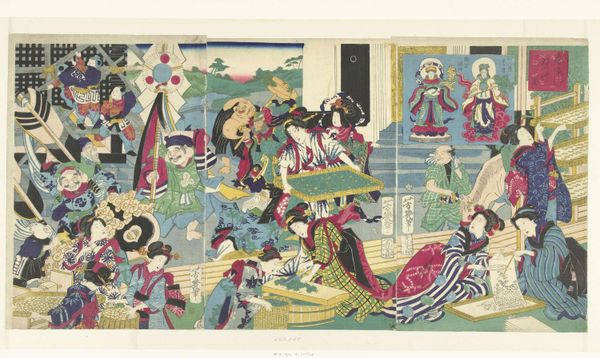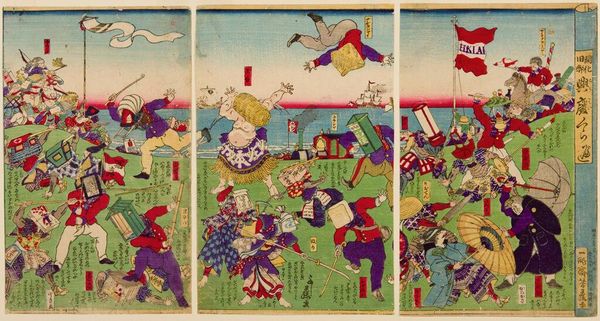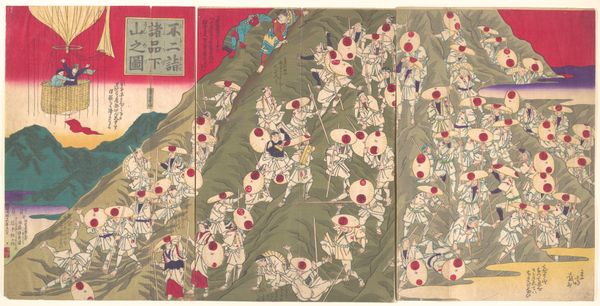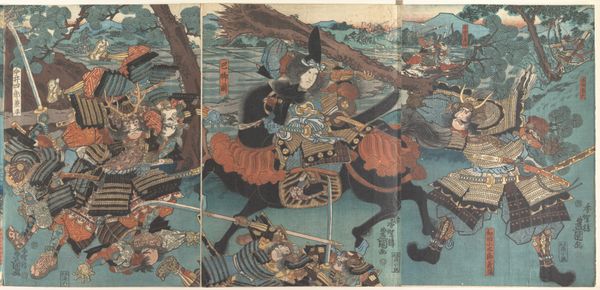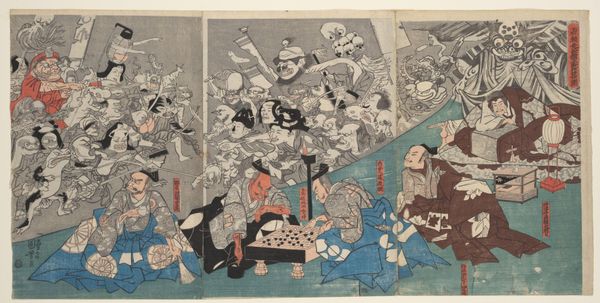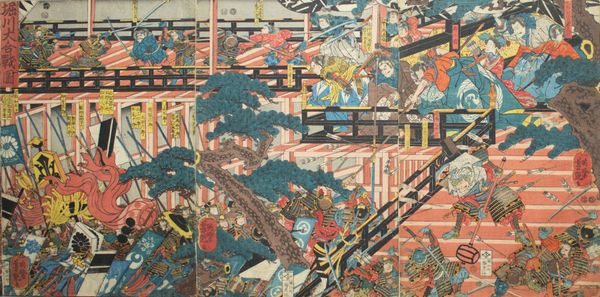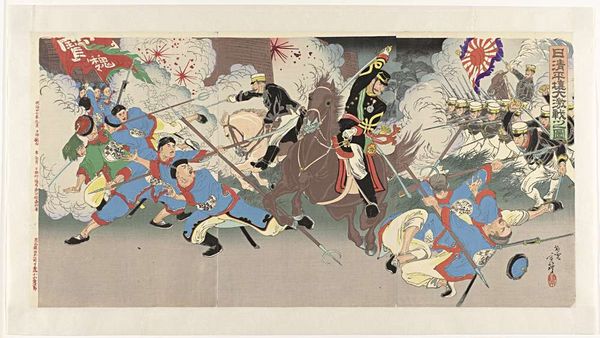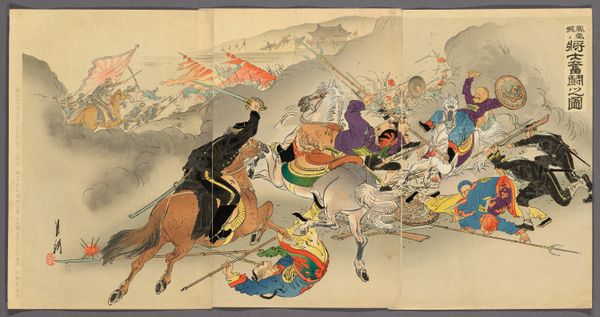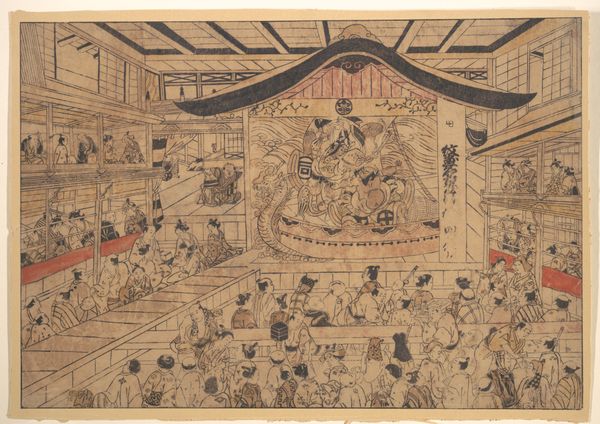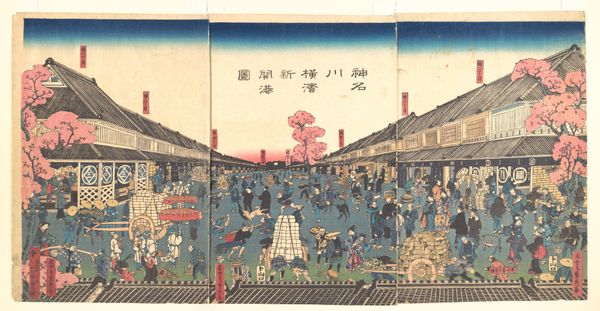
French Equestrian Circus on the grounds of Asakusa Kannon temple (Asakusa kannon keidai ni oite kōgyō tsukawashi sōrō-Furansu kyokuba) 1871
0:00
0:00
Dimensions: 14 1/8 x 28 13/16 in. (35.9 x 73.2 cm)
Copyright: Public Domain
Editor: This vibrant triptych, titled "French Equestrian Circus on the grounds of Asakusa Kannon temple," dates back to 1871, crafted by Utagawa Kuniteru. It's a woodblock print, and the scene is incredibly energetic and chaotic, almost dizzying. The eye just bounces around! What's your take on this frenetic composition? Curator: The overall effect relies on the interplay of forms rather than a focal point; observe how the curves of the horses are counterbalanced by the geometric rigor of architectural elements like the fences, scaffolding, and viewing stand, yielding an arresting visual dynamic. The layering of elements, from the foreground to the suggestion of background within a shallow plane, compresses space. Note that a strong tension exists between decorative formalism and illusionistic representation, but form dominates. Editor: That tension is definitely there. It’s almost like the artist couldn’t decide whether to create depth or flatten everything! How do you think the medium – the woodblock print – influenced those decisions? Curator: The woodblock's inherent characteristic of delineated flat colour planes greatly impacts our visual experience. This technique promotes simplification. Gradations and subtleties of tonal range are largely rejected, leading to its perceived flatness and enhancing the design-like attributes of the work, while also acknowledging the restrictions posed by the print medium itself. What strikes you most about the colours employed? Editor: Well, there’s this limited range of colours that really holds it together, and also prevents it from getting too chaotic – there are a lot of reds and browns throughout the piece, with that vibrant green as a backdrop. Thank you. Curator: Indeed. The strategic and modulated repetition serves not merely a representational role but as a compositional device, reinforcing formal linkages between the triptych's constituent panels. Through this nuanced balance of colour, Kuniteru synthesizes observation and design. Thank you for your insights, which show potential!
Comments
No comments
Be the first to comment and join the conversation on the ultimate creative platform.
